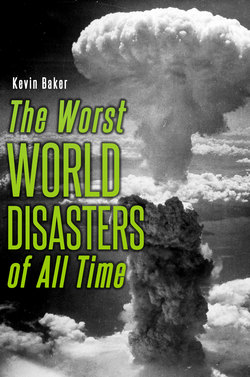Читать книгу The Worst World Disasters of All Time - Kevin Baker - Страница 25
На сайте Литреса книга снята с продажи.
23 – Tenerife Airplane Collision
ОглавлениеDutch Monument in Westgaarde Cemetary, Amsterdam – Image author: Vanzanten
Date: March 27th, 1977.
Location: Los Rodeos Airport, Tenerife.
Disaster Type: Aircraft collision.
Fatalities: 583 deaths.
Resulting Damage: Two Boeing 747 planes lost.
On March the 27th, in 1977 the deadliest crash in aviation history took place on a foggy runway on the island of Tenerife. The collision involved two jumbo jets that collided on the runway and resulted in killing 583 people.
The crash was blamed on the pilot of the Dutch national airline KLM Boeing plane, who didn't check whether he was clear for takeoff down the fog engulfed runway. He had no clearance from Air Traffic Control but he thought he was cleared for takeoff due to a misunderstanding between his flight crew and ATC, so it was not deliberate, just human error. This resulted in the KLM Boeing clipping a Pan-Am plane which was taxiing across the runway.
The incident at Los Rodeos airport had an extra number of flights as there was pressure on the small airport’s resources, due to diversions of flights from Las Palmas due to a bomb exploding at Gran Canaria Airport.
The explosion from the collision echoed across the whole island and no-one survived on the Dutch Boeing, which was carrying 249 passengers. The Pan-Am jumbo jet was carrying 378 passengers together with a crew of 16 of which only 60 people survived.
Emergency services struggled handling such a tragic accident where there were so many casualties, as the airport was engulfed in thick black smoke.
The Spanish authorities blamed the KLM captain for the accident. However, The Netherlands Department of Civil Aviation said that they could not be blamed for a misunderstanding between the air traffic controller and the KLM crew.
After limitations on the use of radio for a means of communication were recognised, which allowed for human error to creep in, standardised phraseology in ATC communication between flight controllers and pilots was given more importance. A concept called 'Crew Resource Management' was also introduced, which involved flight crew members being encouraged to speak out if they thought the captain was making a bad decision. Likewise, pilots are now instructed to listen to their flight crew and evaluate their comments, even if they are less experienced.
The worst accident in history prior to this was the 1974 Turkish Airlines crash - flight 981 which happened near Paris and claimed 346 lives. This crash was caused by a cargo hatch blowing off, which in turn caused decompression and severed cables that left the pilots with no way to control the plane. The latching of the hatch was done by a Moroccan baggage-handler who could read neither English nor Turkish.
